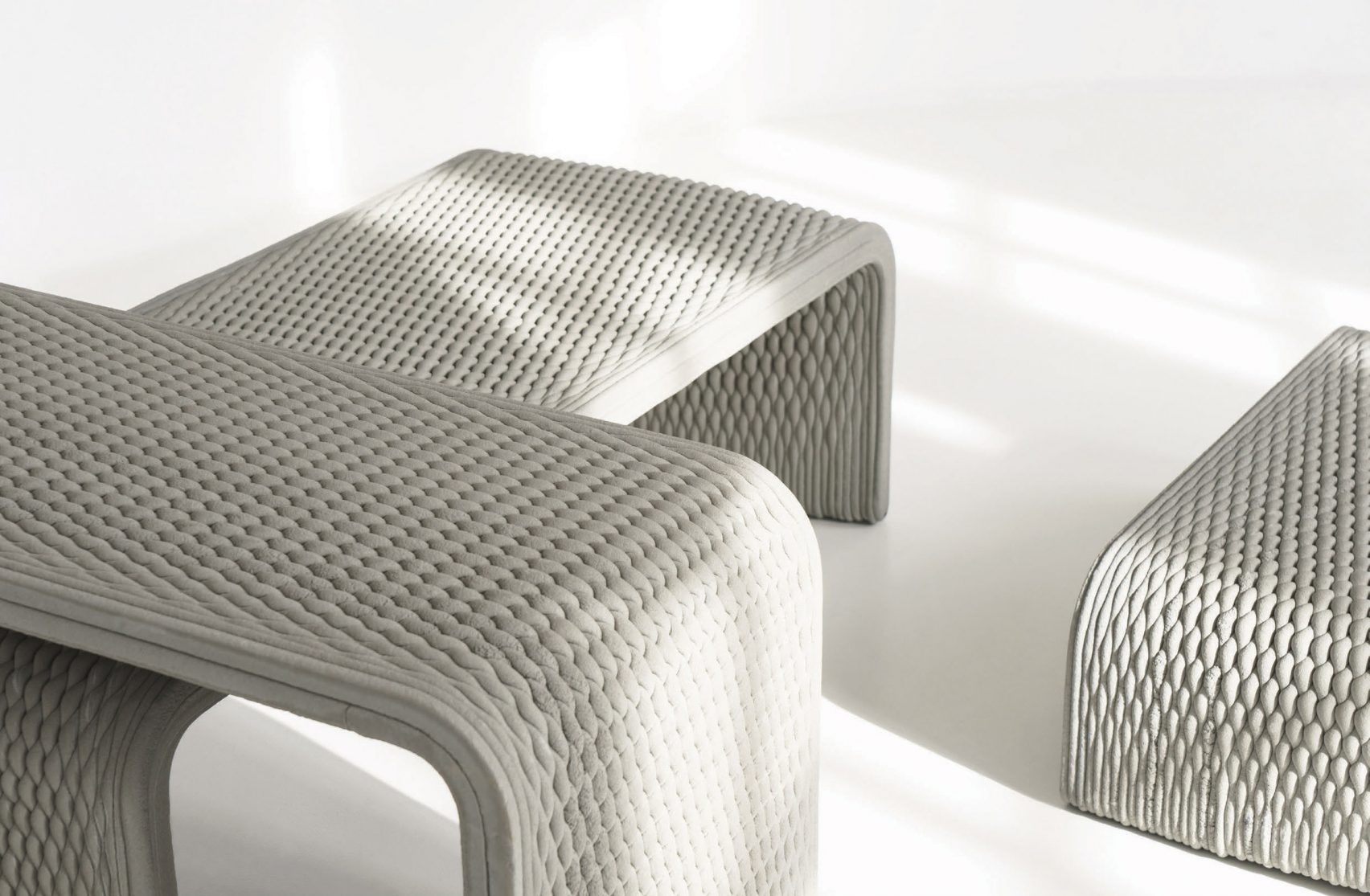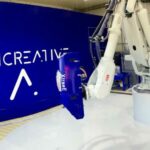Berlin-based Studio 7.5 collaborated with Parisian 3D printing experts XtreeE to produce a series of concrete benches. The benches are the product of continuously printed concrete that display a woven pattern with significant complexity, which would have been impossible to replicate in a single mold. The method allows for a sturdy bench but is also far lighter than a full concrete bench.
The woven concrete benches present a texture that is not only visually reminiscent to woven textiles, it also follows the same production routine. It uses a continuous thread that runs along a path in order to create the construction’s outline and structure. While Studio 7.5 has a lot of experience with design, XtreeE were the ones with the know-how for concrete printing. Consequently, they provided the technology for this project, which they’ve used extensively before.
According to Dezeen:
These benches are part of a collection of custom-made street furniture by Studio 7.5, who are best known for its longstanding relationship with the brand Herman Miller. The studio’s Cosm Chair for Herman Miller has been longlisted for the inaugural Dezeen Design Awards.
Production Process
The concrete printing process alternates layers with a robot head, moving in an continuous oscillating waves. It slowly builds up the layers in this fashion, using this movement creates the woven textile pattern. What’s novel about it is that it would be impossible to do this with a single mold in traditional methods. The process uses less concrete and thus also allows for far less carbon emissions.
The pattern itself is entirely original and Studio 7.5 developed it exclusively for the benches. Since the launch of the bench, various companies have used this material while working with XtreeE.
Design group HANNAH have developed similar structures for a park in New York. Much like those designs, these benches have significant spaces thanks to the design style. This makes them lighter and more mobile. They are also much cheaper and efficient in their use of concrete. XtreeE can print similar structures in about 20 minutes as well. It presents a whole new aesthetic and efficient means of creating architectural seating.
Featured image courtesy of XtreeE and Studio 7.5, retrieved via Dezeen.





